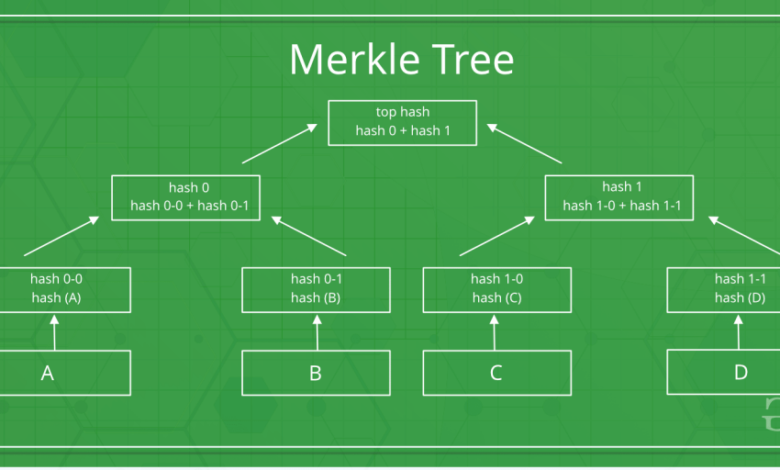What is a Merkle Tree?

Each leaf node of a hash tree, also known as a Merkle tree, is labeled with the cryptographic hash of a data block, and each non-leaf node is labeled with the cryptographic hash of the labels of its child nodes. Hash tree implementations can include a lot of child nodes even though the majority are binary (each node has two children).
But what precisely is a Merkle tree, and how does blockchain technology use one? Therefore, you’ve come to the right place if you’re interested in finding out the answers to all of these questions.
- In computer science, binary hash trees—also known as Merkle trees—are a typical kind of data structure.
- To more efficiently and securely encrypt blockchain data, they are used in bitcoin and other cryptocurrencies.
- The summaries of all the transactions in a block are compiled using a mathematical data structure based on hashes.
- Verification of the data’s consistency and quality also includes rapid, secure content verification across huge databases.
What Is a Merkle Root?
- A Merkle root can be used to mathematically confirm the data on a Merkle tree.
- They are used in cryptocurrencies to guarantee that data blocks sent via a peer-to-peer network remain whole, unharmed, and unchanged.
- For the computing required to keep cryptocurrencies like ether and bitcoin running, they are crucial.
Why Is It Essential to Blockchain?
Consider a blockchain without Merkle Trees to get an idea of how crucial they are for blockchain technology. Let’s start with Bitcoin because it is easier to understand and makes extensive use of Merkle Trees.
- Every node on the network would have to keep a complete copy of each and every Bitcoin transaction that has ever been made if Merkle Trees didn’t exist. The volume of data that would be present is easily imaginable.
- Because any authentication request on Bitcoin would require a substantial amount of data to be relayed over the network, you will need to independently validate the information.
- Comparing ledgers to ensure there haven’t been any changes would require a lot of computing power from a computer used for validation.
- Merkle Trees offer a solution to this issue. By hashing accounting records, they distinguish the data from the data’s supporting documentation.
- Proving that a transaction can be valid with only a tiny amount of data transferred across the network.
- It can also be used to demonstrate that the nominal computing and network bandwidth requirements for both ledger types are the same.





